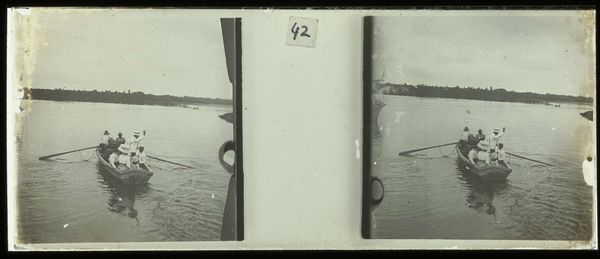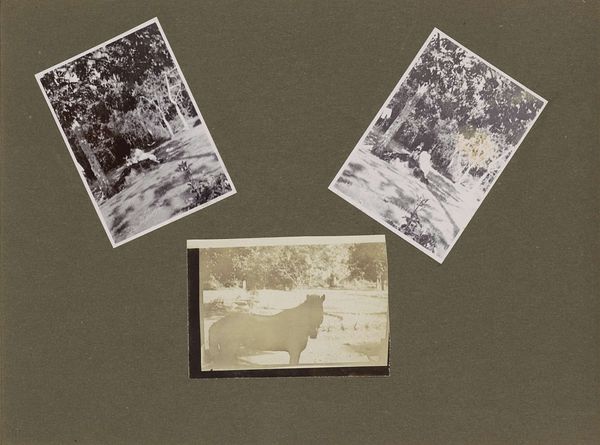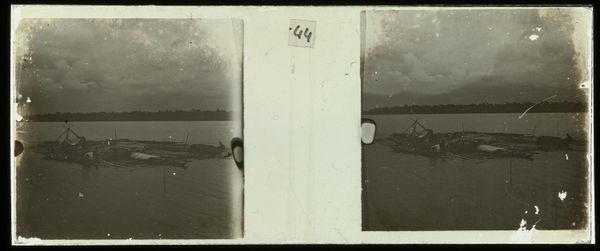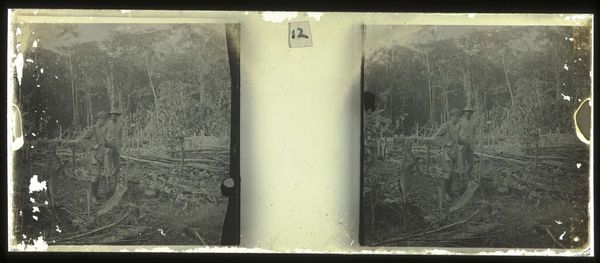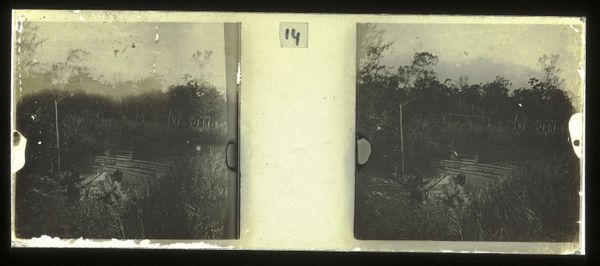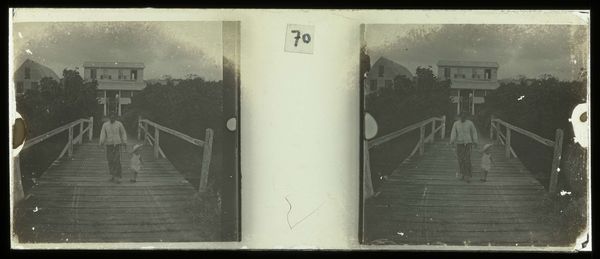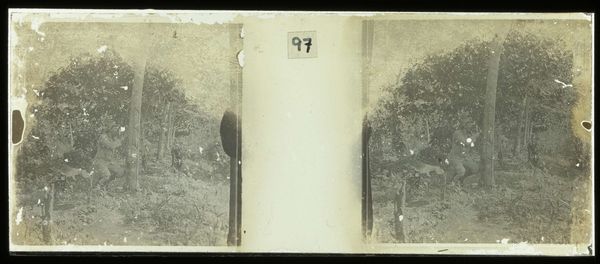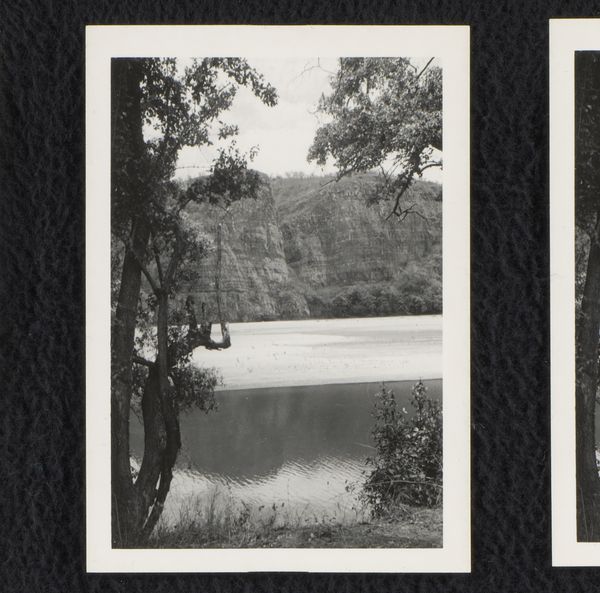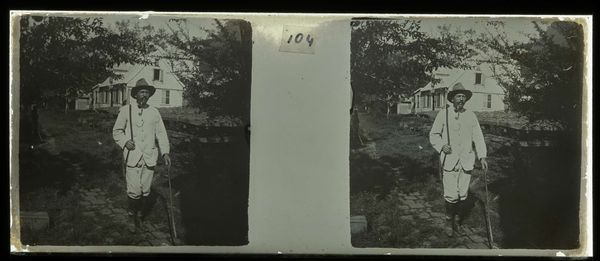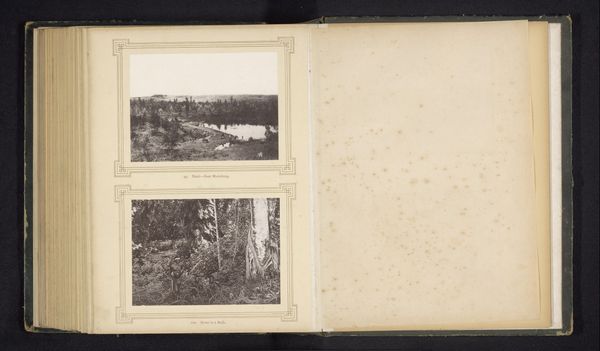
photography
#
landscape
#
photography
#
realism
Dimensions: height 4.5 cm, width 10.5 cm
Copyright: Rijks Museum: Open Domain
Editor: This is Theodoor Brouwers’ photograph "Arbeiders in een vaartrens op plantage Accaribo", taken sometime between 1913 and 1930. It's a black and white photograph of workers in what looks like a waterway. The landscape feels quite still, almost mournful. What stands out to you when you look at this work? Curator: What I find most compelling is the composition. The division into near and far is pronounced, demarcated by tonal gradations. Notice the contrast: the dark foreground vegetation set against the subdued horizon, and the placement of the laborers situated directly at the visual midpoint. It serves to ask us, "What unifies the scene?" Editor: The photograph seems almost split in two halves... what purpose does that separation serve? Curator: Indeed, the structure appears bisectional. The division encourages a relational reading—the workers and their labor serving as an implicit mediator to bridge two halves otherwise disparate in tonal value. Further, the mirroring of the water's reflections underscores the intentionality behind Brouwers’ photographic method. Do you notice how the photograph also appears in stereo format? Editor: It does! It is designed to be viewed in stereo. This approach must surely deepen its impact? Curator: Precisely. This intentional method forces a reading of "unity through constructed parallax"; further enriched and brought into a unified focus for our attention and visual appreciation. This approach heightens our involvement with not just the represented labourers, but in addition emphasizes our role of co-creating their meaning and placing. Editor: I see, it seems like it asks us to look and construct our own view. Thanks, this has given me a completely different way to consider the work! Curator: My pleasure. The compositional rigor is key, remember, and it unlocks many potential interpretations.
Comments
No comments
Be the first to comment and join the conversation on the ultimate creative platform.
